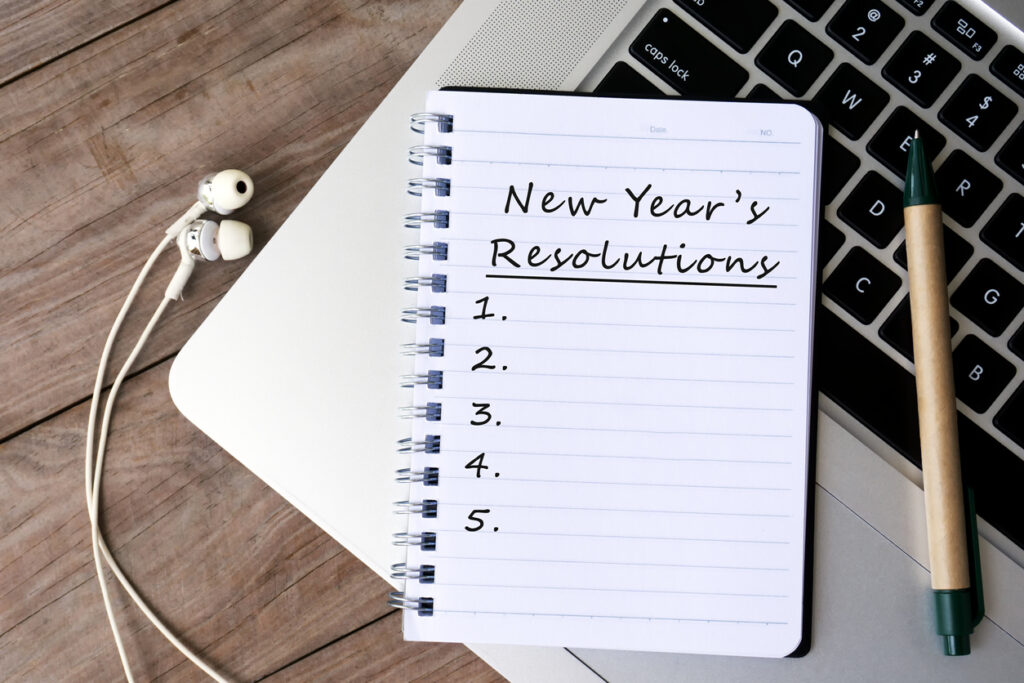At this time every year, about forty percent of Americans make New Year’s Resolutions. That’s roughly one hundred thirty million people. On one level, this is encouraging. It shows that in general, we’re optimistic about the future. We want to change something in our lives for the better and have plans to put that change into action. But on another level, when you dig into the statistics on how many people keep their resolutions, what you find is fairly discouraging.
And that’s putting it mildly.
Before we get into the stats on the success and failure rates of New Year’s Resolutions, let’s take a look at the types resolutions people made last year. You can compare yours to this list and find out exactly where you stand.
According to an online poll of over a thousand people conducted by Statista last November, here’s what Americans said they resolved to do:
- 53% – Save more money
- 45% – Lose weight or get in shape
- 24% – Travel more
- 23% – Read more books
- 22% – Learn a new skill or hobby
- 16% – Quit smoking
We collated various population reports and arrived at a ballpark number of around two-hundred-fifty million Americans over the age of twelve for the year 2018. If we combine the reports above and accept them as representative of our population, we arrive at the following number estimates for what American resolved to do:
- 69 million – Save money
- 59 million – Lose weight or get in shape
- 31 million – Travel more
- 30 million – Read more books
- 29 million – Learn a new skill or hobby
- 21 million – Quit smoking
We did that math to show that if you made similar resolutions, you’ve got plenty of company.
So. Here’s the big question: how many will stick to those resolutions?
Keeping New Year’s Resolutions: The Data
We warned you.
It’s not pretty.
If you do a quick online search, the most common number you find – repeated ad nauseam in scores of articles across the web – is eight percent. That number seems to correlate with a survey from YouGov this year that showed around six percent of people definitely kept their resolutions for at least six months, while fourteen percent mostly kept their resolutions for six months.
However, that highly cited eight percent number is not necessarily trustworthy. The source most articles use for this paltry percentage is a two-year study performed by researchers at the University of Scranton back in 1989. And – in a rather befuddling quirk we discovered – that study clearly states that after two years, nineteen percent of respondents reported success at keeping their resolutions.
We’re not sure why the media fixates on the lower number, but it doesn’t really matter: the higher number isn’t all that great, either. At roughly one in five, it means most people don’t keep their resolutions. To put it in terms of the numbers we used above, the low number says around ten million kept their resolutions, and the high number says around twenty-six million kept their resolutions.
But we’re not going to fixate on either one of those numbers. Instead, in answer to the question posed in the title of this post, here’s what we say:
Yes! New Year’s Resolutions are totally worth it.
Why?
In the face of overwhelming odds, why do we advise people to go ahead and make New Year’s Resolutions?
Because hope.
Hope is what we hang our hats on every single day of the year.
And also, we know why most people don’t keep theirs.
Keeping Your New Years Resolutions: Tricks of the Trade
Data and statistics aren’t necessary to understand why most people don’t keep their resolutions. Sure, there’s research to cite. But the reasons most people don’t keep their resolutions are really just plain common sense. First, they think that on January 1st they’re going to wake up and be a completely different person. That initial mistake leads to resolutions that aren’t realistic at all. Second, they don’t have a solid plan in place for achieving their resolutions. Third, when they slip – which is bound to happen – they give up. They figure there’s no way they’re going to keep their resolutions, so instead of picking themselves up, dusting themselves off, and getting back at it, they throw in the towel.
We know how to avoid all those mistakes.
We can’t guarantee you’ll keep your resolutions, but we can offer practical tips to increase your chances of achieving your goals for the new year.
Ready?
How to Keep Your New Year’s Resolutions
- Know Yourself. This is probably the most important point we have to make. If you’ve never exercised before, resolving to work out for two hours a day, five days a week is probably never going to happen. If exercising is your goal, then calibrate your resolution. Go for something ambitious, but pragmatic. For instance, a twenty minute walk every day is doable. Twenty pushups and fifty sit-ups three times a week is also doable. Or, if you’re a group exercise-type person, start with a twenty minute walk every day and two workout classes a week.
- Make Them Achievable. This is right in line with knowing yourself. You want your resolutions to be challenging, but not out of reach. Let’s stick with the exercise thing and look at – for sake of argument – running (or jogging). Say you’re in decent shape. You’ve run a 5k before, but it’s been a year or two since you’ve been out on the road. You’re active, but realistically, running three miles tomorrow would take an hour and totally bum you out. Therefore, making a resolution to run a marathon by summer is not the way to go. Since you’ve run a 5k before, make your goal a 10k. You won’t be able to do it right away, but it’s not out of reach.
- Bite-Size Chunks. This is right in line with making your goals achievable. Say your goal is to run a 10k by the end of 2019. Break that goal down into smaller milestones you know you can do. Organize those milestones progressively. Start with a mile: resolve to run a mile within a month. Then build on that. Two miles in two months. Three miles in three months – that’s a 5k right there. You’re halfway to your goal a quarter of the way through the year.
- Daily Actions. Consistency is key. Keeping with the running angle, here, think of things you can do every day that move you toward your goal. And they don’t have to be running, per se. To be a healthy runner or jogger, you need to stretch. You need to strengthen. So, as part of your big picture, add some stretching and strengthening. On days you don’t hit the road or treadmill, stretch your legs or do some squats or calf raises. Nothing crazy – just enough to keep you in the game. Enough to tell yourself, “Today I’ve done something to achieve my goal.”
- Days Off. To completely contradict what we just said, it’s fine to take days off. Note: if sobriety is your goal, ignore this one. You can either plan these, as in “Fridays are my rest days,” or take them as they come. Sometimes life gets in the way, and that’s okay. Sticking with the running/jogging theme, you can use the time to relax, recharge, and mentally prepare for your next run or jog.
- Accountability Partners. One of the best ways to make sure you stick to a program of any sort is to tell other people you’re going to do it. Or even better, get a friend on board with you. Remember those numbers above? There are literally millions of people out there making resolutions. You can find one. If you’re having a bad day and want to skip your run (yes, we’re following through with this example), you’re more likely to do it if you know a friend is waiting for you to show up. Then, when you do show up, you can motivate one another. And you’ll also increase their chances of showing up for you when they’re having a bad day.
- Handling Slips and Hiccups. No one is perfect. There will be bumps in the road on the way to achieving your resolutions. This adage is old and close to worn out, but the fact is that it does not matter if you miss a day. Or a week due to an injury, bad weather, or life circumstances. What matters is that you get back to it as soon as you can. To complete our running/jogging example: if you stick with it for three months, then have a week where you completely fall off your plan, you’re still way ahead of where you started in January. You won’t be back at square one. The first run back might be tough, but that will pass – and soon you’ll be right back on track.
The Goal: Positive Change Moving Forward
We want you to understand something here: when we say “know yourself,” we don’t mean “limit yourself.” Your ultimate goal is to make positive life changes that enrich your life and make you feel better about yourself. But if you make your goals unrealistic, you set yourself up for failure. Most of the time, failure feels bad. And that’s counter-productive. We want you to make positive resolutions that increase your self-esteem, your sense of self-worth, and your belief that you can and will change your life for the better. It won’t happen all at once, and it won’t happen overnight.
But if you make realistic goals and have a solid plan in place, you can absolutely do it.
You can make 2019 the year you stick to your New Year’s Resolutions.































































